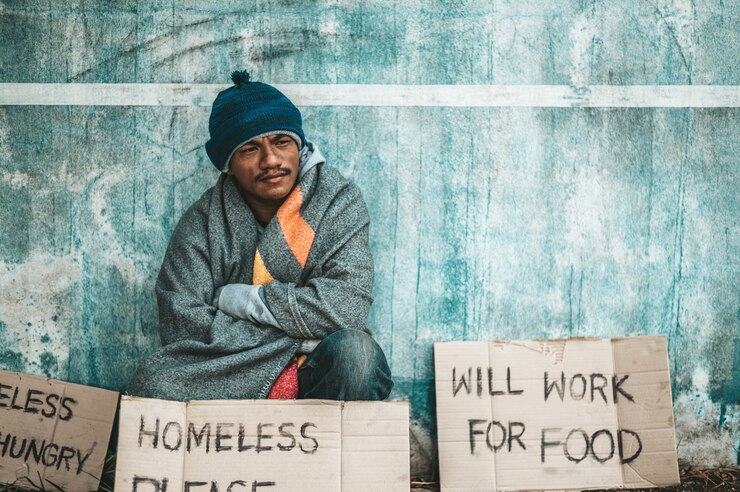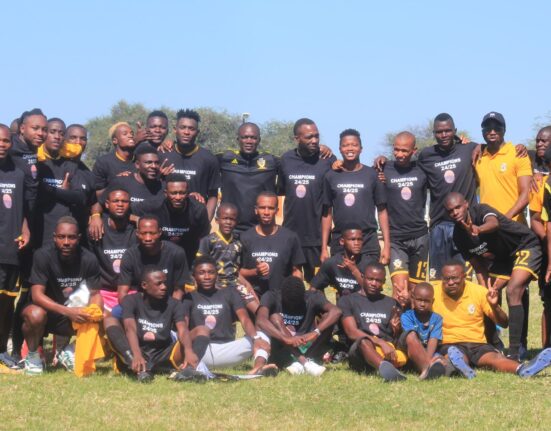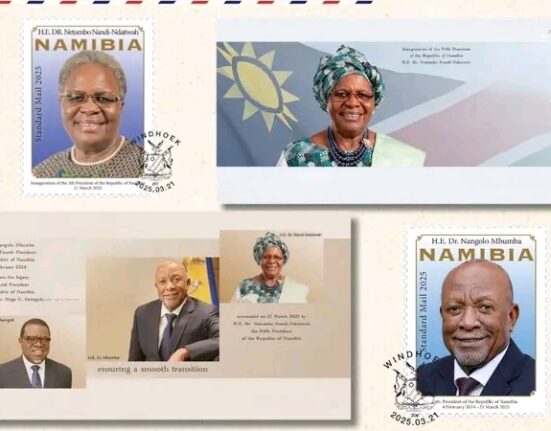Namibia, a nation marked by both vast natural wealth and stark economic inequality, has long faced the challenge of addressing poverty and income disparity. Despite being one of the more economically advanced nations in Africa, Namibia remains one of the most unequal countries in the world, according to the Gini coefficient. This inequality is rooted in the colonial and apartheid legacies that have entrenched disparities in wealth, education, land ownership, and access to essential services. However, since gaining independence in 1990, Namibia has made concerted efforts to reduce poverty and create a more equitable society. This article delves into Namibia’s challenges with poverty and income inequality, the policies and strategies the government has implemented, and the ongoing obstacles that remain.
Understanding Poverty and Income Disparity in Namibia
Before examining Namibia’s efforts, it is crucial to understand the scope and scale of poverty and income disparity in the country.
Poverty in Namibia
Poverty in Namibia is widespread, particularly in rural areas. Approximately 27.6% of the population live below the poverty line, which is defined as earning less than $1.90 per day (World Bank standard). However, the poverty figures mask significant disparities, with rural populations, indigenous groups, and women being disproportionately affected. The Northern and Eastern regions of the country, such as the Ohangwena, Zambezi, and Kavango regions, are particularly impacted by poverty, while urban areas such as Windhoek and Swakopmund generally fare better.
Historically, poverty in Namibia has been influenced by several factors, including colonial land dispossession, inequality in access to education and healthcare, and the systematic exclusion of black Namibians from the formal economy. Many rural communities, particularly those in the Oshiwambo, Herero, and Nama regions, depend on subsistence farming and have limited access to markets, services, and infrastructure, making it difficult to break the cycle of poverty.
Income Inequality
Namibia’s income inequality is one of the highest in the world. The Gini coefficient, a measurement of income inequality, places Namibia among the top five most unequal countries globally. The country’s wealth is concentrated in the hands of a small elite, and the majority of wealth is generated from sectors like mining, manufacturing, and agriculture, which are often dominated by large corporations. This results in a sharp contrast between the rich and the poor, with those in urban centers benefitting from economic growth while rural and informal economies continue to struggle.
The legacy of apartheid is still deeply felt in Namibia, where wealth distribution remains disproportionately skewed along racial and ethnic lines. Although political power was transferred to the SWAPO government after independence, land and resource ownership were not significantly restructured. Consequently, while the black majority gained political freedom, economic resources have remained largely in the hands of the historically privileged white minority, who still control much of the country’s commercial land and assets.
Government Strategies to Address Poverty and Income Disparity
Since independence, the Namibian government has implemented a variety of policies and programs aimed at addressing poverty and narrowing the income gap. These efforts focus on improving education, healthcare, land reform, social security, and economic diversification. Some key strategies include:
1. Land Reform and Access to Resources
Land reform is perhaps the most contentious and significant issue in Namibia’s efforts to address inequality. Under colonial and apartheid rule, land was systematically taken from indigenous groups and redistributed to white settlers, resulting in severe disparities in land ownership. After independence, the Namibian government prioritized land redistribution as a means to reduce poverty and foster economic equity.
The government established the Land Reform Programme, which sought to redistribute land to previously disadvantaged Namibians. This program included market-based land redistribution (where government purchases land from white commercial farmers and resells it to black farmers), and the communal land tenure system, which grants collective land ownership in rural areas. However, land reform has faced challenges, including insufficient funding, the slow pace of land redistribution, and political resistance from white farmers and landowners. These barriers have hindered the effectiveness of land reform efforts in reducing economic inequality.
2. Social Safety Nets and Cash Transfers
In recognition of the structural inequalities that contribute to poverty, Namibia has made significant strides in expanding its social safety net programs. The government has rolled out a variety of welfare initiatives designed to support the most vulnerable populations, including the elderly, disabled, and children.
One of the key success stories in Namibia’s fight against poverty is the Old Age Pension, which is provided to all Namibians over the age of 60, regardless of income or employment status. This universal pension has been credited with significantly reducing poverty among elderly citizens and providing a stable income for many who would otherwise be destitute.
Additionally, Namibia has introduced child grants, disability benefits, and food aid programs to support families and vulnerable groups. These programs have played a role in reducing extreme poverty, but the challenge remains to expand and improve the targeting of these programs to reach more people in need.
3. Education and Skill Development
Education is a cornerstone of Namibia’s poverty alleviation strategy. The government has made significant investments in expanding access to primary and secondary education, which has led to a sharp increase in school enrollment rates across the country. The Namibian Education Sector Policy and the National Development Plan both emphasize education as a means to improve human capital and provide greater opportunities for economic mobility.
Moreover, Namibia has focused on providing vocational training and adult education programs to address the skills gap in the workforce. The Namibia Training Authority and various private training providers offer courses designed to equip young people with practical skills to enter the labor market. Education and skill development initiatives are crucial for reducing income inequality by empowering individuals to gain better-paying jobs and break the cycle of poverty.
4. Economic Diversification and Job Creation
Namibia’s economy is heavily reliant on the mining industry, particularly diamonds, uranium, and other minerals. This reliance on a few sectors has led to the concentration of wealth and limited job creation in other industries. In response, the government has made efforts to diversify the economy and create jobs in sectors such as tourism, agriculture, and manufacturing.
The Growth at Home Strategy, launched by the government, aims to increase the value-added processing of raw materials within Namibia. By focusing on increasing local production, creating jobs, and reducing the reliance on imports, the government hopes to stimulate economic growth and reduce poverty.
Additionally, the Namibian Economic Empowerment initiatives seek to promote the participation of disadvantaged groups in the economy through public-private partnerships, small business development, and entrepreneurship support.
5. Regional Development and Rural Investment
A key aspect of addressing poverty is investing in rural areas, where poverty rates are highest. The government has launched various initiatives aimed at improving infrastructure, access to services, and economic opportunities in rural communities. Programs like the Rural Development Programme focus on providing sustainable livelihoods, better healthcare, and access to clean water for rural populations.
Challenges to Overcoming Poverty and Income Inequality
Despite significant efforts, Namibia continues to face several challenges in reducing poverty and income inequality:
- Land Reform Issues: The slow pace of land redistribution remains a barrier to addressing economic inequality. Many rural Namibians still struggle with access to arable land, limiting their ability to improve their livelihoods.
- High Unemployment: Despite the government’s efforts to create jobs, Namibia continues to face high levels of unemployment, particularly among young people. With limited opportunities for economic advancement, many Namibians remain trapped in poverty.
- Unequal Access to Services: While access to education and healthcare has improved, there are still disparities in service delivery between urban and rural areas, leaving some communities with limited access to essential services.
- Economic Dependence on Natural Resources: Namibia’s reliance on mining and natural resources makes the economy vulnerable to global commodity price fluctuations, affecting income stability and economic growth.
Namibia’s efforts to address poverty and income disparity have yielded some successes, including improvements in education, health, and social safety nets. However, significant challenges remain, particularly in land reform, economic diversification, and rural development. The country’s historical context, rooted in colonialism and apartheid, continues to influence its socio-economic landscape, with disparities in wealth and opportunity still prevalent.
The Namibian government’s commitment to addressing these challenges through policies and programs aimed at reducing inequality and poverty is commendable. However, for Namibia to truly overcome the entrenched poverty and inequality that continues to shape its society, sustained efforts in economic transformation, education, and land redistribution will be essential. As the country moves forward, greater emphasis on inclusive development, targeted social programs, and job creation will be critical in achieving a more equitable and prosperous future for all Namibians.
Join 'Namibia Today' WhatsApp Channel
Get the breaking news in Namibia — direct to your WhatsApp.
CLICK HERE TO JOIN












